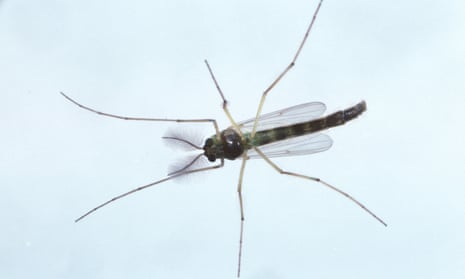Most of us want to run a mile when the midges arrive, but not so for Viktor Baranov, who whips out his microscope to measure the insects. As well as measuring modern midges, Baranov has been looking at fossilised midges, and found that their size can be used to understand the climate going back hundreds of millions of years ago.
Baranov, a palaeontologist at Lüdwig Maximilians University in Munich, chose to measure the non-biting Diptera midge. It is already well known that warm-blooded animals become larger as the climate becomes colder – for example, polar bears are much bigger than bears living in the tropics – so Baranov and his colleagues decided to see if the so called “Bergman rule” would hold for insects too.
After measuring more than 6,300 Diptera midges, dating from 245m years ago to today, they were able to show that northern hemisphere midges become larger the further north they live, with the average midge becoming 1mm longer for every 5 degrees of latitude.
They presented their findings last week at the European Geosciences Union General Assembly 2021. Given that Diptera midges are abundant in fossil records, Baranov and his colleagues are confident that these fossils can provide a window into Earth’s climate in the distant past.

Comments (…)
Sign in or create your Guardian account to join the discussion